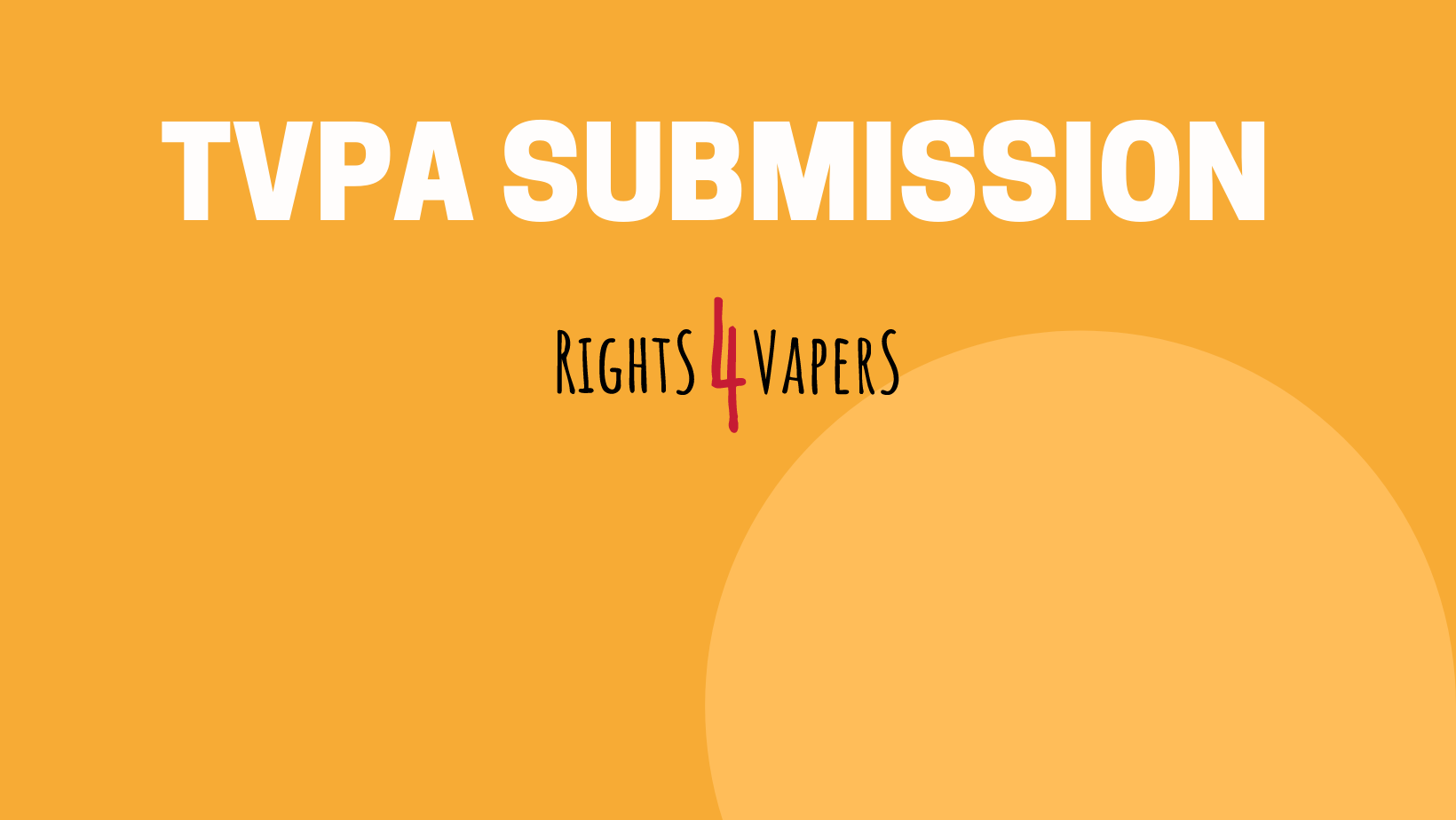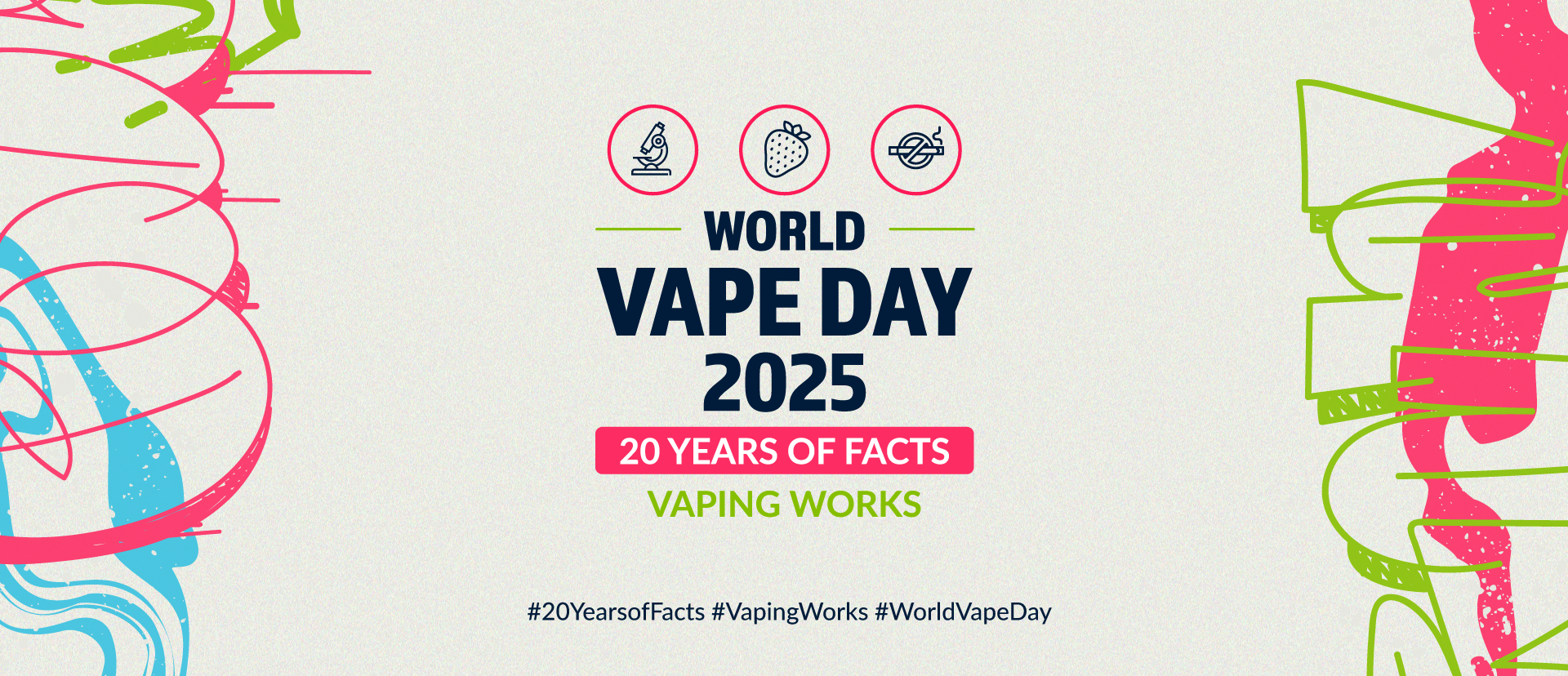INTRODUCTION
In March 2022, Health Canada opened a review of the vaping-related provisions in Tobacco and Vaping Products Act. This review is mandated every three years and comes at a critical time for vaping in Canada. Since the adoption of the TVPA, vaping regulations in Canada have increased while the understanding of vaping as a critical tool in tobacco harm reduction has decreased.
The intent of the TVPA in 2018 was noble: protect Canadians against the harms of smoking. Vaping was seen as a way to support this objective and prevent vaping being used as a gateway to smoking.
Purpose of Act
4 (1) The purpose of this Act is to provide a legislative response to a national public health problem of substantial and pressing concern and to protect the health of Canadians in light of conclusive evidence implicating tobacco use in the incidence of numerous debilitating and fatal diseases.
Vaping products
(3) The purpose of this Act with respect to vaping products is to support the objectives set out in subsection (1), to prevent vaping product use from leading to the use of tobacco products by young persons and non-users of tobacco products
Something got lost along the way.
Vaping became the focus. Regulators seem to have forgotten that their job is to protect Canadians against the harms of tobacco use. Even worse, in its current state, the TVPA disincentivizes smokers from trying vaping as a reduced harm alternative and places the health of one segment of Canadians above others.
The unpleasant reality is that Health Canada did not to its job. When it came to vaping, regulators were swayed by a moral panic and emotional call for prohibition from organizations who cannot fathom that vaping could possibly save lives and are opposed to any product that contains nicotine. Ironically, these same groups are funded by the Government of Canada.
To make matters worse, Health Canada did not educate consumers about the harm reduction potential of vaping. The institution that oversees the public health of Canadians did not communicate that there is a viable alternative to smoking. Instead, Health Canada implemented communications restrictions, nicotine strength caps, and most recently proposed flavour bans.
The losers in all this are Canadian smokers and vapers. They have been demonized because they dare to be addicted to nicotine.
In its discussion paper for this review, Health Canada states that “the effective regulation of tobacco and vaping products is a key element of Canada’s Tobacco Strategy – one that supports achieving the ambitious target of less than 5 percent tobacco use by 2035. Tobacco use remains the leading cause of preventable death and disease in Canada, with approximately 48,000 people dying from smoking-related illnesses every year.”
It does not mention how many Canadians die of vaping every year: ZERO.
If the Government of Canada were to embrace vaping, within a more progressive regulatory framework, lives would be saved, and it would be well on its way to its target of reducing smoking rates to less than 5 percent by 2035.
Rights4Vapers is pleased to provide Health Canada with our views on the TVPA.
Rights4Vapers is Canada’s leading vapour consumer advocacy group. Our organization works to ensure that the option to vape remains available to smokers who choose to make the switch. We represent the vape consumer, 98 per cent of whom are former smokers, and boasts the largest survey data set of Canadian vapers with over 5,000 respondents. We are dedicated to the advancement of Canadian-based research on vaping.
We are an informal collection of committed advocates who believe that vapers and adult smokers deserve a less harmful alternative. We are guided by unpaid academic advisors.
We are a grassroots activist movement. We base our positions on the real-life experiences of adult vapers in Canada.
We are not scientists. However, we follow the science of vaping where it leads. And the science tells us that vaping is less risky than smoking. We believe vapour products are the best and most effective alternative to smoking traditional combustible cigarettes.
In addition, Rights4Vapers reaches out to Canada’s vapers. We have the largest dataset of vaping behaviour in Canada. With over 5,000 respondents, we understand how adult vapers use their products and as a result understand how regulations will impact consumers.
Tens of thousands of Canadian smokers have turned to vaping as a way to reduce the health risks of smoking. Study after study has demonstrated that vaping is less harmful than smoking traditional combustible cigarettes. Public Health England published a paper in 2018 that states “vaping poses only a small fraction of the risks of smoking and switching completely from smoking to vaping conveys substantial health benefits.”[1]
We are concerned that the increasing number of proposed changes to vaping regulations across the country, particularly those banning flavours and imposing limits to nicotine strength, will deter smokers from choosing vaping as a safer alternative to smoking or push vapers back to smoking.
THE VOICE OF VAPERS
We fundamentally believe that putting more restrictions of vaping products will be detrimental to the health of adult Canadian smokers and to the health of current vapers who may return to smoking if they cannot find a product that meets their needs.
We want to make sure that the voice of vapers is heard by officials at Health Canada. Most vapers would never think about sending an official submission in response to a regulatory change. We wanted to give them the chance.
With this in mind, as we have done in previous public calls for submissions, we launched an online tool that gave vapers and supporters the opportunity to send a letter with their point of view.
Over 2,000 Canadians took the opportunity. From coast-to-coast, from every province, vapers and supporters have expressed their support for a more reasonable approach to vaping regulations. They are not scientists, or politicians, or activists. They are ordinary Canadians who deserve a federal health ministry that will listen to their views. They told real stories. We hope you read every one of their letters.
Vapers in Canada have been vocal about their opposition to more restrictive regulations for years. They understand that the life-saving product they depend on is under attack. For example, last summer, when the Government of Canada asked for submissions on the proposed flavour ban, over 20,000 Canadians told you it was a bad idea.
Similarly, when the Government of Canada last consulted on flavoured vapour products, 23,000 individual postcards were counted as ONE submission. This purposeful suppression of the voice of Canadian vapers is emblematic of the constant exclusion we face when it comes to the regulation of vapour products. We have made the choice to throw away our cigarettes for a less harmful product. Why are our voices excluded? Why is our health less important?
Our health and well-being deserve to be protected. We will continue to make our voices heard.
OUR RESPONSE
Health Canada has put forward five objectives of the TVPA for comment. Rights4Vapers has chosen to base our response on these five goals.
- Protect young persons and non-users of tobacco products from inducements to use vaping products.
On this we can agree. Minors should not vape. Vaping products contain nicotine, an addictive substance. This being said, is there truly an ‘epidemic’ of youth vaping that warrants restricting access and communications to adult smokers who are looking for an alternative to cigarettes?
According to CAMH most recent report, student vaping is down 33% in Ontario. 85% of students did not even vape once in 2021. More students are using caffeine, alcohol and cannabis than vape. Opioid use is going up, vaping is going down.
There is no epidemic. There is only moral outrage and panic. We ask Health Canada to not get distracted by emotion and look at the science.
The gateway argument is often brought up by anti-vaping advocates. They state that vaping leads to smoking. However, this has been discredited time and again. And is even acknowledged in Health Canada’s own discussion paper for this review:
There have also been concerns that an increase in youth vaping may lead to increases in youth smoking rates in Canada. However, recent data, presented below, suggests that, thus far, this has not been the case. Smoking rates, for both youth and adults, continue to decline and are at an all-time low. The prevalence of daily smoking among youth aged 15 to 19 years was so low (small sample size) that it was considered to be ‘unreportable’ in 2020.
There is also the question of access. Despite strict federal regulations that govern the sale of vapour products, and in particular the sale of these products to minors, minors are still vaping. The current federal regulations need to be better enforced.
- Protect the health of young persons and non-users of tobacco products from exposure to and dependence on nicotine that could result from the use of vaping products.
It is true, vaping products contain nicotine. The jury is still out on whether vaping causes large scale nicotine addiction in youth. One study found that “vaping likely addicts some young people to nicotine. However, the evidence does not suggest it is addicting very large numbers.”[2]
But what about current smokers? Their lives are at stake Their dependence on nicotine should not preclude them from access to a potentially life-saving alternative.
Let’s look at the government’s own data:
Data from the 2020 Canadian Tobacco and Nicotine Survey indicate that vaping products were used by 3 percent (854,000) of Canadians aged 25 years and older. Among this group, 94 percent (799,000) identified themselves as current or former smokers. Among those who currently smoke and vape, 49 percent (192,000) stated that they are vaping to quit and/or reduce the number of cigarettes smoked.
When do we start having a mature conversation about balancing the perceived risks of youth vaping and the very real lifesaving benefits to smokers who switch to vaping?
Consumers would love to be part of this conversation.
- Protect the health of young persons by restricting access to vaping products.
There is a difference between restricting access and removing access. Currently, the laws stipulate that no one under the age of 18 is allowed to purchase a vaping product. There has been no enforcement of this by Health Canada. The Evaluation of the Health Portfolio Tobacco and Vaping Activities 2016-17 to 2020-21 the report is in agreement:
While several regulatory initiatives have been made to help address the rapid rise in youth vaping, implementing these recent regulations will take time. The current legal regime for vaping under the TVPA provides a range of enforcement tools that should be expanded to better support efficiency and effectiveness of compliance activities. Research and surveillance activities could also benefit from industry reporting requirements.
One of those enforcement tools should be actual consequences for selling to minors.
- Prevent the public from being deceived or misled with respect to the health hazards of using vaping products.
This is where Health Canada has really dropped the ball.
Vaping is less harmful than smoking. This is clear. Health authorities the world over have coe to this conclusion through science, not through wishful thinking. In addition, last year 15 past-presidents of the Society for Research on Nicotine and Tobacco signed a report stating the same thing.
Vapour products are the best hope for hundreds of thousands of Canadians who smoke and are looking for an alternative to cigarettes. In 2021, Public Health England released its latest review of vapour studies. It found that “the best thing that a smoker can do is to stop smoking completely and the evidence shows that vaping is one of the most effective quit aids available, helping around 50,000 smokers quit a year.”
But Canadian smokers do not know it.
The Canadian Tobacco and Nicotine Survey 2019 survey found that only 4.3% of Canadians identified vaping as being much less hazardous than smoking. Buried deep in Health Canada’s website is the statement: “if you are a smoker, vaping is a less harmful option than smoking.”
This is not enough.
Health Canada needs to launch a public awareness campaign on harm reduction potential of vaping.
- Enhance public awareness of those hazards.
Our only question is: what are the proven health hazards associated with vaping?
CONCLUSION
Vaping should be an important part of Canada’s tobacco harm reduction agenda. Right now, it is not.
As we stated earlier, we believe that children should not vape. The problem is that kids are getting access to vaping products from friends and family. We need effective education and enforcement programs, not barriers that limit the choice of vaping products to adult smokers.
Vapers need to be confident that the product they are using complies with the highest product standards. The proliferation of black-market devices that can be tampered with is a growing concern. Just like with any other consumer good, vapour products should adhere to safety and quality standards.
Finally, adult consumers need to know the facts about vaping. They need to know that vaping is less harmful than smoking. They need to know the science behind it. They need to know their options and how to use them.
Why isn’t Health Canada listening to vapers? Shouldn’t the regulator be interested in how vapers procure and consume the very products being regulated?
Everything that Health Canada has done over the past three years seems to have one objective: drive vapers back to smoking and keep smokers smoking.
It makes no sense.
Rights4Vapers advocates for a return to a reasonable and balanced vaping regulatory framework. One that accepts the scientific findings of global experts who have unanimously found that vaping is less harmful than smoking.
We would welcome the opportunity to publicly present our positions. We trust that any changes to Canada’s federal vaping regulations take into consideration the many thousands of adult smokers who have chosen vaping to quit smoking and reduce their risk of the serious health problems caused by smoking.
[1] https://www.gov.uk/government/news/phe-publishes-independent-expert-e-cigarettes-evidence-review
[2] Jackson SE, Brown J, Jarvis MJ. Dependence on nicotine in US high school students in the context of changing patterns of tobacco product use. Addiction. 2021;116(7):1859–1870. https://doi.org/10.1111/add.15403




